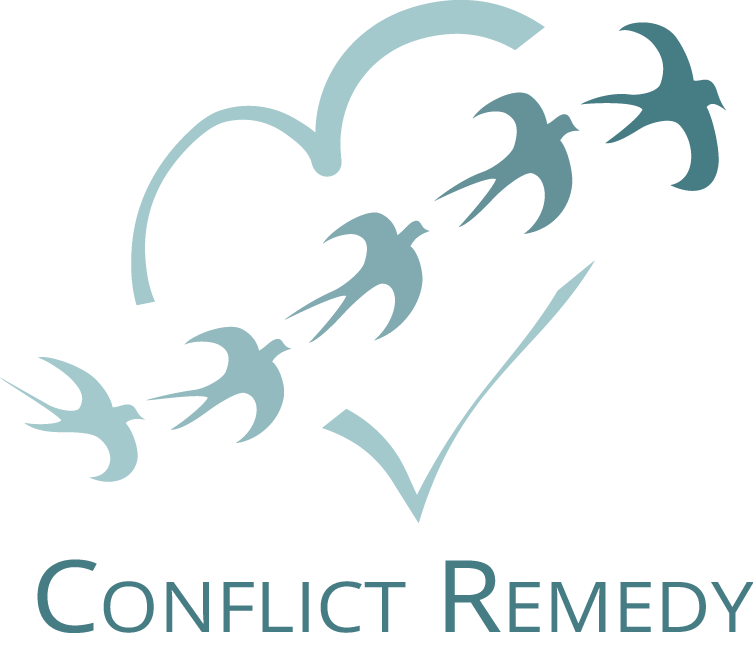 We have to make room for feelings and conflict at work.
We have to make room for feelings and conflict at work.
People frequently have a lot of confusion about the role of feelings and emotions at work. I was interviewed recently on this topic by Gabriel Cox, one of my wonderful students in the conflict management certificate program at Sonoma State, who is a trainer and coach in his own right.
Gabriel Cox: Why do you believe we hide our emotions in the workplace?
Lorraine Segal: A lot of people hide their emotions everywhere because they are afraid of them or don’t know how to express them appropriately. This can be even more true at work. Many people mistakenly think that being professional means not having feelings. They may be concerned that having feelings will make them look weak, vulnerable, or incompetent. In particular, they may have no idea how to express negative emotions such as anger in a way appropriate to a workplace.
GC: What do you believe the impact on ourselves and those who work for us is when we hide our emotions?
LS: As I say in my presentation on difficult conversations, when we hide our emotions rather than expressing them, they don’t go away. They lurk under the surface. Being suppressed, the pressure to release them can build. These feelings may leak out in sarcastic remarks, non-verbal hostility such as eye rolls or sighs, negativity about projects, gossip behind people’s backs, even subversive activities that derail or impede work productivity. Eventually, feelings that haven’t been dealt with can cause emotional explosions or complete withdrawal. Consequences include intractable workplace feuds, people being fired or people quitting.
GC: What positive impacts may happen if we were able to own our emotions in the workplace?
LS: Emotions are part of being human. When people at work learn to express their natural feelings appropriately, to first do the inner work of acknowledging and working through feelings themselves, possibly with coaching or other support, and then be responsible and selective in sharing those feelings, This process has a number of positive effects including: building closeness, trust, and authentic relationships, lessening passive-aggressive behavior that impede workplace productivity and good relationships, supporting honest and respectful feedback that supports people’s growth at work.
Steps to get started:
Adding on to the interview, here are some steps I recommend to get started if you want to improve your own relationship with feelings at work:
- Accept that having feelings at work or anywhere is part of being human.
- Acknowledge and express the feelings you’re having to yourself verbally or in writing without self-judgement or blame. You may want to rant without censoring or being in the least logical. Or vent to a trusted friend, coach, or mentor to take the “edge” off of your feelings.
- Ask yourself, “What’s my share in this problem?” Can you adjust your attitude and behavior and change the dynamic that way? Do you need to find a calm way to speak up, set a limit, get help with a project?
- Take action, inner and/or outer, to change your attitude or behavior or to address the issue with someone else in a calm, open way.
This is one of the issues I’ve helped a number of coaching clients deal with, and I can tell you with complete confidence that positive change is possible!
 Lorraine Segal has a deep passion for helping people in organizations and corporations communicate better, resolve conflicts, let go of resentments, and deal with bullying. The goal: to create a more harmonious and productive workplace. Through her business, Conflict Remedy, Lorraine creates customized training and coaching programs for non-profit organizations, corporations, and government agencies. She is also lead instructor for the Conflict Management Certificate, a professional development program at Sonoma State University. She is a contributing author to the recent book, Stand Up, Speak Out Against Workplace Bullying. She writes a blog through her Conflict Remedy website and was recently listed as one of the Top Conflict Management experts to follow on LinkedIn. Contact Lorraine at https://ConflictRemedy.com for more information, to request a free consultation for you and your organization or to sign up for her newsletter.
Lorraine Segal has a deep passion for helping people in organizations and corporations communicate better, resolve conflicts, let go of resentments, and deal with bullying. The goal: to create a more harmonious and productive workplace. Through her business, Conflict Remedy, Lorraine creates customized training and coaching programs for non-profit organizations, corporations, and government agencies. She is also lead instructor for the Conflict Management Certificate, a professional development program at Sonoma State University. She is a contributing author to the recent book, Stand Up, Speak Out Against Workplace Bullying. She writes a blog through her Conflict Remedy website and was recently listed as one of the Top Conflict Management experts to follow on LinkedIn. Contact Lorraine at https://ConflictRemedy.com for more information, to request a free consultation for you and your organization or to sign up for her newsletter.
